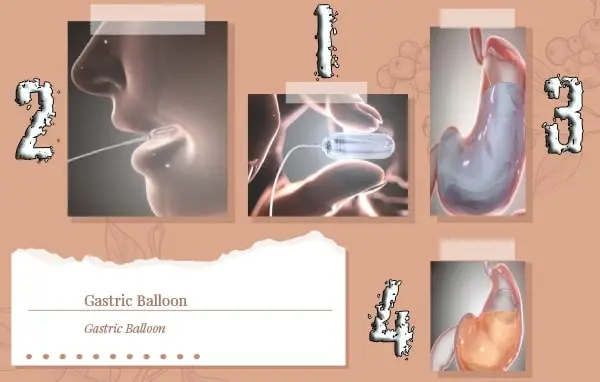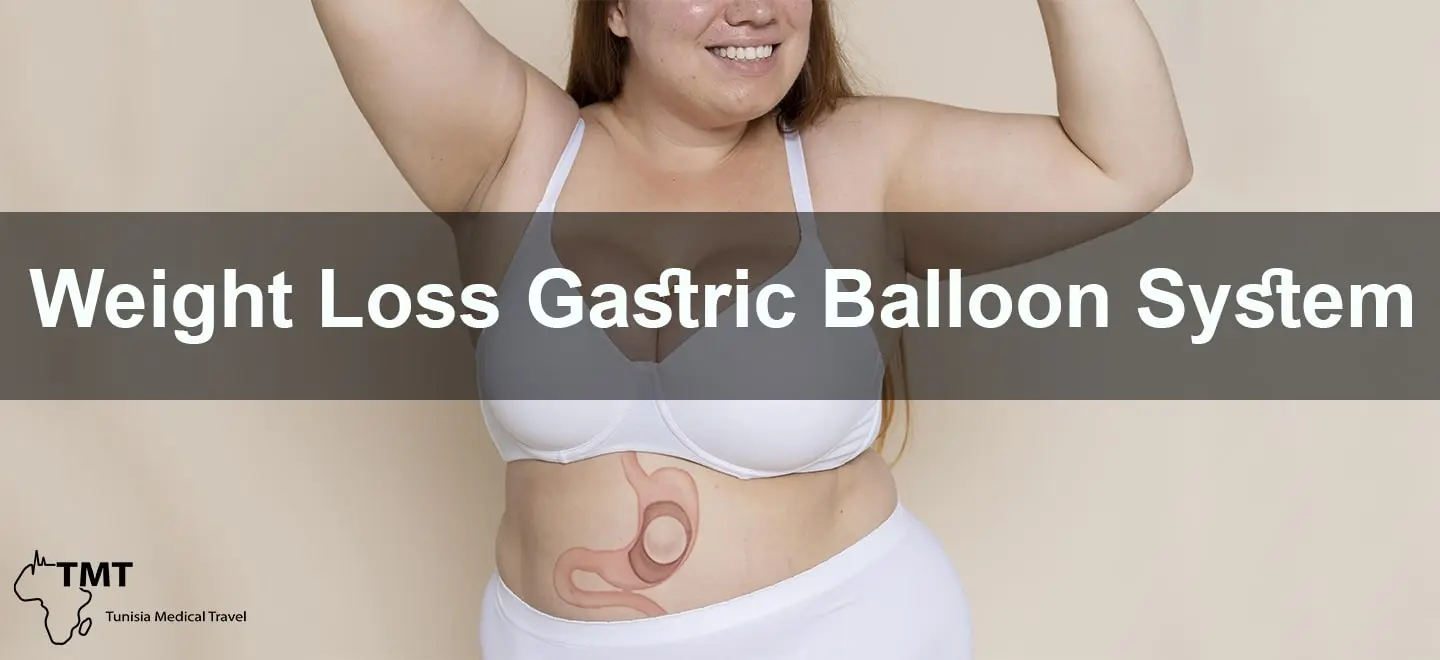Weight Loss Gastric Balloon System
Weight Loss Gastric Balloon System
In the pursuit of effective weight loss solutions, the gastric balloon system has emerged as a promising option. Tailored to meet the needs of individuals striving for a healthier lifestyle, this innovative approach offers a non-surgical method to aid in weight reduction. Let’s delve deeper into what the gastric balloon system entails and how it can be a game-changer in your weight loss journey.
What Is a Weight Loss Gastric Balloon?
A weight loss gastric balloon, also known as an intragastric balloon, is a medical device designed to assist individuals in achieving significant weight loss. This non-invasive procedure involves placing a deflated balloon into the stomach, which is then inflated to create a feeling of fullness. By occupying space within the stomach, the balloon reduces the capacity for food intake, leading to reduced calorie consumption and subsequent weight loss.
What Happens During a Gastric Balloon Procedure?
On the day of the gastric balloon procedure, the patient arrives at the medical facility, where they are greeted by a team of experienced healthcare professionals dedicated to their care. Before the procedure commences, the patient is typically administered sedation to ensure comfort and relaxation throughout the process. With the patient in a sedated state, the gastroenterologist or bariatric surgeon begins the placement of the gastric balloon. Using a specialized endoscope, a thin, flexible tube with a camera and light attached, the healthcare provider carefully guides the deflated balloon through the patient’s mouth and into the stomach. This process is performed under direct visualization, allowing the healthcare provider to navigate the balloon safely into the desired position within the stomach cavity. Once the balloon is in place, it is filled with a sterile saline solution, causing it to expand and occupy space within the stomach.
The inflation of the gastric balloon serves two primary purposes. Firstly, it creates a sensation of fullness or satiety within the patient’s stomach, reducing their appetite and limiting their food intake. Secondly, the presence of the balloon alters the physical dynamics of the stomach, slowing down the rate at which food moves through the digestive system. This dual mechanism contributes to the overall effectiveness of the gastric balloon system in promoting weight loss. Throughout the procedure, the healthcare team closely monitors the patient’s vital signs and response to ensure their safety and well-being. Once the balloon is successfully placed and inflated, the endoscope is carefully removed, and the patient is transferred to a recovery area for observation. While some patients may experience mild discomfort or nausea immediately following the procedure, these symptoms are typically transient and can be managed with appropriate medications and supportive care.
Following the gastric balloon procedure, patients are provided with post-procedure instructions, including dietary guidelines and recommendations for maintaining optimal hydration. Regular follow-up appointments with the healthcare provider are scheduled to monitor progress, address any concerns, and provide ongoing support throughout the patient’s weight loss journey.
How to Prepare for a Gastric Balloon Procedure?
Preparing for a gastric balloon procedure involves several crucial steps to ensure a smooth and successful experience. Firstly, it’s essential to schedule a consultation with a healthcare provider specializing in weight loss interventions. During this consultation, the healthcare provider will assess your medical history, current health status, and weight loss goals to determine your eligibility for the procedure. They will also provide detailed information about what to expect before, during, and after the gastric balloon insertion. Once you’ve been deemed a suitable candidate for the gastric balloon procedure, your healthcare provider may provide specific instructions to follow in the days leading up to the procedure. These instructions may include dietary guidelines to help prepare your stomach for the insertion of the balloon. It’s essential to adhere to these guidelines carefully to optimize the success of the procedure and minimize the risk of complications.
Additionally, your healthcare provider may recommend certain lifestyle modifications to adopt in the weeks leading up to the procedure. These modifications may include incorporating regular physical activity into your routine and making healthier dietary choices to support your weight loss goals. By adopting these lifestyle changes early on, you can establish healthy habits that will benefit you throughout your weight loss journey. On the day of the gastric balloon procedure, it’s essential to arrive at the medical facility on time and prepared for the intervention. You may be instructed to refrain from eating or drinking for a certain period before the procedure to ensure your stomach is empty. It’s also advisable to arrange for transportation to and from the medical facility, as you may not be fit to drive immediately after the procedure due to the effects of sedation.

What Is the Recovery Time from the Procedure?
The recovery period following a gastric balloon procedure is generally swift and relatively straightforward, thanks to the minimally invasive nature of the intervention. Unlike traditional weight loss surgeries, which often entail longer recovery times and significant post-operative care, individuals undergoing gastric balloon placement can typically resume their daily activities within a few days. However, it’s essential to recognize that the exact recovery timeline can vary depending on individual factors such as overall health, tolerance to the procedure, and any potential complications that may arise. Immediately following the gastric balloon placement, individuals may experience some mild discomfort, including nausea, bloating, or abdominal cramping. These symptoms are generally temporary and can be managed effectively with medication and adherence to post-procedure dietary recommendations. It’s crucial for patients to follow the guidance provided by their healthcare provider regarding dietary restrictions and gradual reintroduction of solid foods to minimize discomfort and support optimal healing.
While most individuals can return to work and light activities within a few days, it’s essential to listen to your body and avoid strenuous exercise or heavy lifting during the initial recovery period. Engaging in gentle movement and staying hydrated can help promote healing and reduce the risk of complications. Additionally, attending follow-up appointments with your healthcare provider is essential to monitor your progress, address any concerns, and ensure that the gastric balloon is functioning as intended. As the body adjusts to the presence of the gastric balloon over the following weeks, individuals may notice changes in appetite, eating habits, and weight loss progress. It’s essential to maintain regular communication with your healthcare team and adhere to any dietary or lifestyle recommendations to maximize the effectiveness of the procedure and achieve long-term weight loss goals.
While the recovery time from a gastric balloon procedure is relatively short compared to traditional weight loss surgeries, it’s essential to approach the process with patience, commitment, and a proactive mindset. By prioritizing self-care, adhering to post-procedure guidelines, and seeking support from healthcare professionals, individuals can navigate the recovery period with confidence and set the stage for successful long-term weight loss outcomes.
Who Is Eligible for a Gastric Balloon Procedure?
Determining eligibility for a gastric balloon procedure involves considering various factors to ensure that individuals can safely undergo the treatment and achieve the desired weight loss outcomes. Generally, candidates for a gastric balloon procedure are those who may not meet the criteria for more invasive weight loss surgeries like gastric bypass or sleeve gastrectomy, yet still require significant assistance in managing their weight. Ideal candidates typically have a body mass index (BMI) ranging from 30 to 40, indicating that they are overweight or moderately obese. However, BMI alone does not determine eligibility; other factors such as overall health, medical history, and previous weight loss attempts are also taken into account. Candidates should have attempted traditional weight loss methods such as diet and exercise without achieving sustainable results.
Furthermore, candidates must demonstrate a commitment to lifestyle changes and adhere to post-procedure guidelines to maximize the benefits of the gastric balloon. This includes adopting healthier eating habits, regular physical activity, and attending follow-up appointments with healthcare providers to monitor progress and address any concerns. It’s important for candidates to undergo a comprehensive evaluation by a qualified healthcare provider to assess their suitability for the procedure. This evaluation may include physical examinations, laboratory tests, and consultations with specialists such as nutritionists and psychologists to ensure that candidates are mentally and physically prepared for the challenges and requirements of the gastric balloon procedure.
Certain medical conditions or lifestyle factors may affect eligibility for the gastric balloon procedure. Individuals with untreated or poorly managed medical conditions such as gastrointestinal disorders, heart disease, or substance abuse may not be suitable candidates. Additionally, candidates should be non-smokers or willing to quit smoking, as smoking can interfere with the effectiveness of the gastric balloon and increase the risk of complications. Overall, eligibility for the gastric balloon procedure is determined on a case-by-case basis, taking into consideration individual health status, lifestyle factors, and the potential benefits and risks of the procedure. Candidates should work closely with their healthcare providers to assess their eligibility and make informed decisions about incorporating the gastric balloon into their weight loss journey.
Does Insurance Cover the Gastric Balloon Procedure?
Coverage for the gastric balloon procedure may vary depending on individual insurance plans and regional regulations. While some insurance providers may offer partial or full coverage for medically necessary weight loss interventions, coverage for elective procedures such as the gastric balloon system may be limited. It’s advisable to consult with your insurance provider to determine coverage options and potential out-of-pocket expenses.
The gastric balloon system offers a promising avenue for individuals seeking effective weight loss solutions without undergoing invasive surgery. By understanding the procedure, preparation, recovery, eligibility criteria, and insurance considerations, individuals can make informed decisions about incorporating this innovative approach into their weight loss journey. If you’re ready to take control of your health and explore the benefits of the gastric balloon system, consult with a qualified healthcare provider to discuss your options and embark on a path towards lasting weight loss success.

